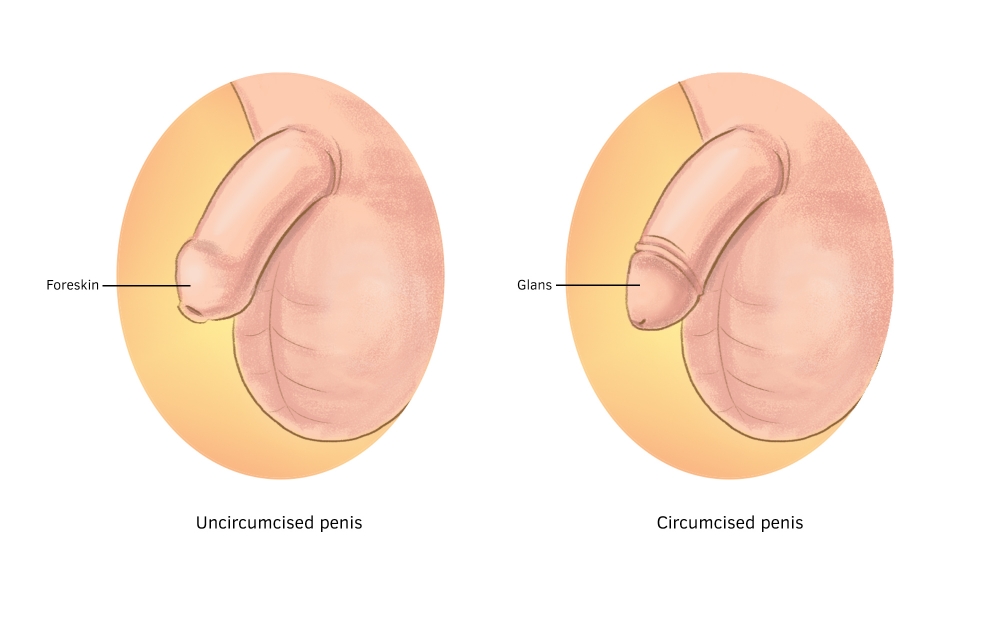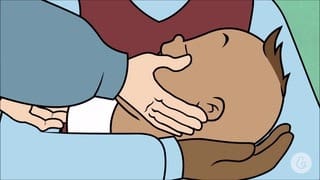What is male circumcision?
Circumcision is an elective surgical procedure performed on males. It is the practice of removing the foreskin from the male’s penis. Circumcision is generally a safe procedure and complications are rare.
About 30% of males worldwide are circumcised.1,2 Circumcision rates vary widely between cultures. The common reasons given for circumcision are cultural, tribal and medical – in Australia circumcision rates are between 10-20%.3 In the United States the figure is about 65%.3
Circumcision, and particularly infant circumcision, is a controversial issue for many people. Public health authorities, such as the Royal Australian College of Physicians, do not recommend routine circumcision of healthy males on medical grounds.3 Their view is that the potential medical benefits of circumcision do not justify the potential risks of the procedure. However, there are respected opinions, most prominently the American Academy of Pediatrics, that suggest that the medical benefits of infant circumcision do outweigh its risks. Generally, circumcision is neither medically encouraged nor discouraged; the decision is left to the individual or his parents.
Historically, circumcision rates in the US and the United Kingdom started rising near the end of the 19th century, primarily for reasons of hygiene. It should be noted that, at the time, ‘hygiene’ also meant suppressing sexual activity (including masturbation), as it was considered unhealthy and shameful.
Reasons for performing circumcision
Religious and cultural reasons
In a number of societies across the globe, circumcision is an accepted cultural practice, for reasons of religion, tradition or aesthetic preference.
Circumcision forms part of the practices of several faiths, most notably Islam and Judaism. Several ethnic groups, particularly in parts of Africa, also practise ritual male circumcision.
Medical
The common medical reason for considering circumcision is the potential prevention of infections, particularly sexually-transmitted infections (STIs). As discussed later, this does not replace the need for practising safe sex.
In certain rare conditions, such as pathological phimosis and recurring urinary tract infections (in children and adults), circumcision is recommended as a surgical treatment for the existing condition.
The procedure
Circumcision is performed by doctors as well as by traditional practitioners. When performed by doctors, it is done under sterile conditions under a local or general anaesthetic. Usually, if it is performed in the first few days of life, a local anaesthetic is used. If it is performed later, usually after six months of age, a general anaesthetic is used.
The doctor separates the foreskin from the penis and cuts away the foreskin. After the foreskin is removed, the doctor will dress the wound. Infant circumcision takes about 10 to 15 minutes, while adult circumcision may take up to an hour.
In the days after the procedure is completed, the penis is washed, cleaned and lubricated until the incision site heals completely. Healing usually takes up to a week.

In a circumcised penis, the foreskin is removed, exposing the glans.
Benefits of circumcision
Studies have suggested medical benefits for circumcision. Being circumcised may:
- Reduce the incidence of urinary tract infections, particularly during the first year of life;
- Reduce the risk of genital ulcers;
- In regions with a high prevalence of HIV, it may reduce the risk of men acquiring the infection from vaginal sex;
- Reduce the risk of contracting human papillomavirus (HPV) infection;
- Reduce the chance of HPV infection and cervical cancer for the sexual partners of circumcised men;
- Possibly reduce the rate of other STIs, such as herpes viruses;
- May reduce the risk of inflammation of the penis glans, and;
- Reduce the risk of penile cancer.
It should be noted, however, that:
- Many of the above mentioned problems are not common ones. It is estimated that it takes 111 circumcisions to prevent a single case of urinary tract infection (which is usually not a serious illness)4,5 and between 909 and 322,000 circumcisions to prevent a single case of penile cancer;5
- Circumcision does not entirely prevent infections. Circumcised men are still at risk of catching sexually-transmitted diseases such as HIV/AIDS unless they practise safe sex, and;
- The conclusions of the studies suggesting a beneficial link between circumcision and lowered rates of sexually-transmitted infections have been challenged. Safe-sex measures are still necessary.
Risks and disadvantages of circumcision
Circumcision is a surgical procedure and carries with it the risks of surgery, including:
- Pain;
- Bleeding;
- Removing too much or too little of the foreskin;
- Risk of reactions to anaesthetics used;
- Risk of infection, and;
- Risk of complications (see below).
In addition, there are disadvantages to removing the foreskin. Disadvantages may include the following:
- Surgical removal of a healthy body part;
- Circumcision is mostly an irreversible decision. If a change of heart occurs later, the only option is to undergo foreskin restoration, a costly and cumbersome process, and;
- Potential complications of the procedure (see below).
It is not yet clear whether circumcision lessens sexual function and sexual pleasure for men and their partners. The foreskin is a sensitive area with many nerve endings and it does function as a natural lubricant during sexual intercourse. However, men who had been circumcised in adulthood often report that their sexual pleasure was not reduced after circumcision.
Potential complications
Only 0.2-0.6% of surgically-performed circumcisions result in complications.1,6 The rate is higher for circumcisions not performed by doctors.
Complications of a circumcision performed by medical professionals are usually mild. In rare cases, severe complications can cause permanent damage to the penis.
Complications of circumcision can include:
- Infection;
- Pain;
- Extensive bleeding;
- Reduced sensitivity of the penis;
- Damage to the penis, particularly the glans, and;
- Scarring.
Infant and adult circumcision
Most circumcisions are performed on infants during their first days of life. Therefore, it is most often up to the parents to decide whether their child should undergo circumcision. In doing so, parents will consider their religious, societal and ethical values as well as the perceived medical benefits and disadvantages.
Some parents may decide to circumcise based on their religious and societal convictions, or in order to provide their son with some possible protection against STIs and future urinary tract infections. Other parents may decide not to have their son circumcised, as they will feel it is an unnecessary medical intervention, will wish to spare their son from the pain and possible trauma associated with the procedure, or wish that it should not be their responsibility to decide on an irreversible procedure for their infant son, who is years away from becoming sexually active.





